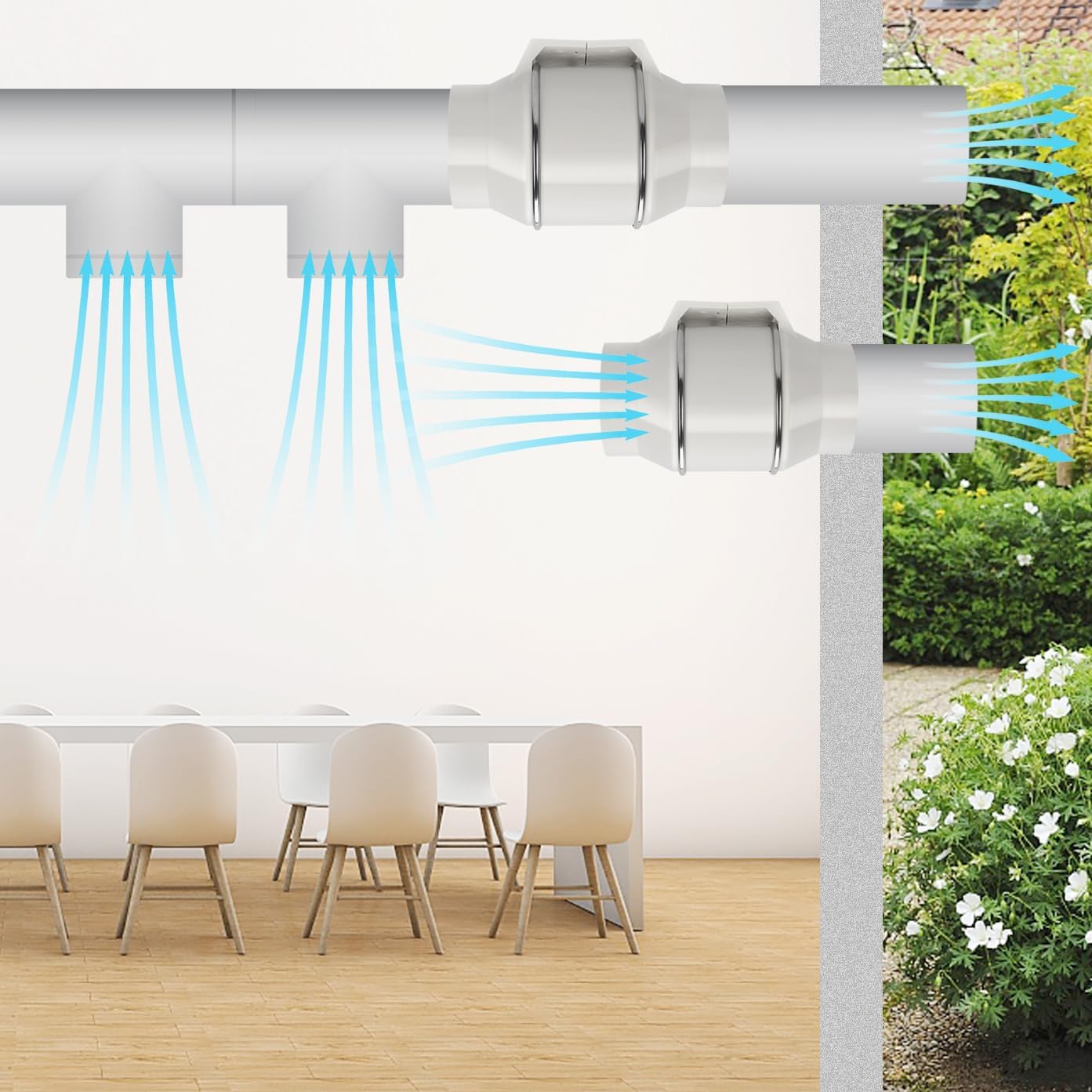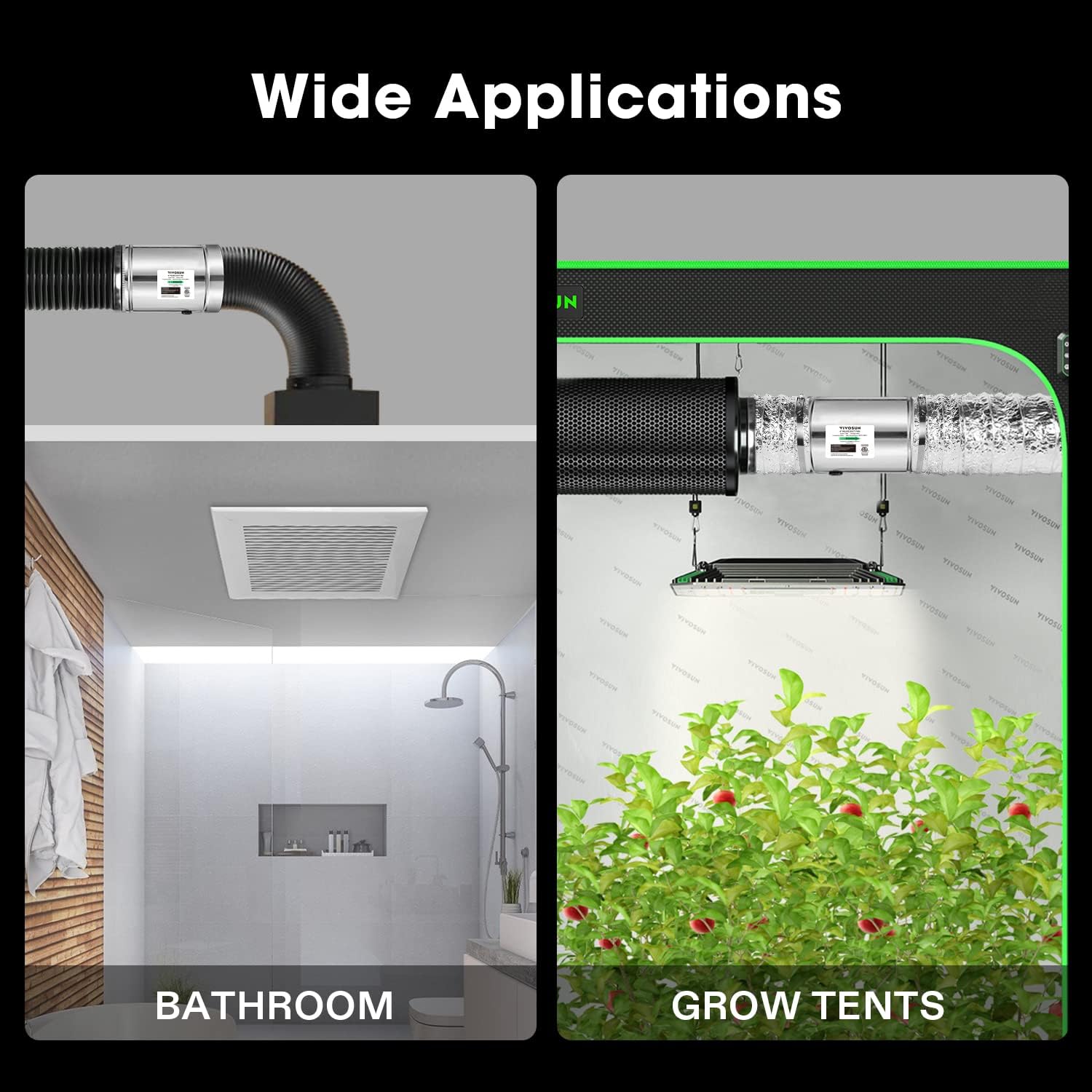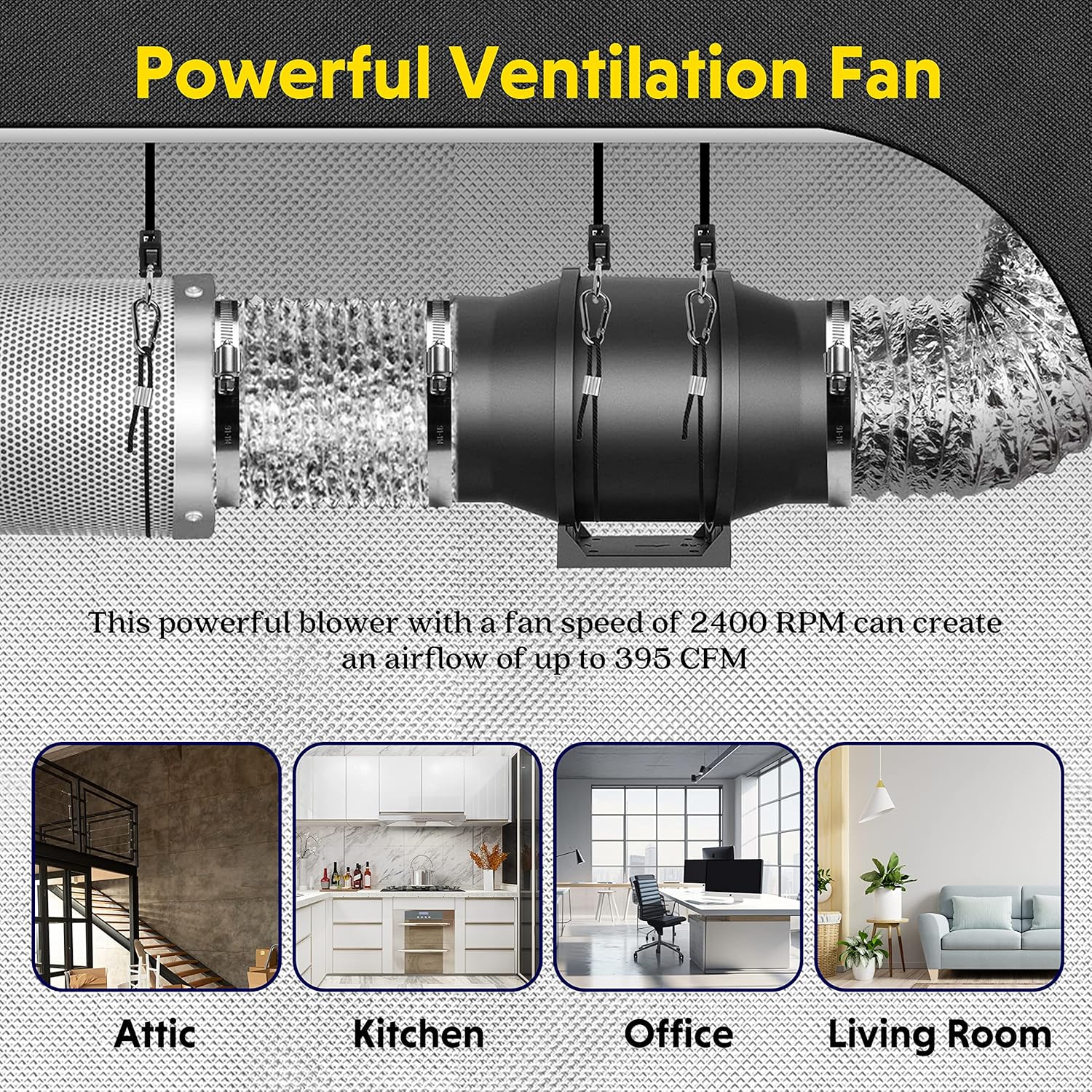Welcome to our FAQ section on inline duct fans! Here, we aim to answer your most common questions about these versatile devices, helping you understand their benefits and how they can improve air quality in various settings. An inline duct fan is an excellent solution for many ventilation challenges.
Q: What exactly is an inline duct fan and what is its main purpose?
A: An inline duct fan is a type of fan designed to be installed directly within a section of ductwork. Its primary purpose is to boost airflow through the ducts, helping to efficiently move air from one area to another. Unlike ceiling or wall-mounted fans that circulate air within a room, an inline duct fan works as part of a ducted system to either supply fresh air, exhaust stale air, or improve the overall efficiency of heating and cooling systems. They are crucial for areas that require targeted ventilation solutions, such as rooms far from the main HVAC unit or spaces with specific air quality needs. These fans are engineered to overcome the static pressure commonly found in duct systems, ensuring air moves effectively over distances and through bends or filters.
Q: How does an inline ventilation fan improve air quality in different spaces?

A: An inline ventilation fan significantly enhances air quality by facilitating the exchange of indoor and outdoor air, or by circulating and filtering air within a building. In residential settings, an inline ventilation fan can be used in kitchens to expel cooking odors and steam, in bathrooms to remove moisture and prevent mold growth, and in basements to combat stagnant air. For example, installing one can turn a damp basement into a more usable, healthy space. In grow tents, precise air circulation is vital for plant health, and these fans help regulate temperature and humidity while removing odors. Their ability to be installed discreetly within ductwork means they don't intrude on the aesthetic of the space while powerfully improving the air you breathe.
Q: When should I consider a high airflow inline fan?
A: You should consider a high airflow inline fan when you need to move a large volume of air quickly and efficiently. This is particularly important in larger spaces or in situations where there's a significant source of pollutants, heat, or humidity that needs to be managed. For instance, a high airflow inline fan is ideal for industrial workshops to clear fumes and dust, in commercial kitchens to handle high levels of smoke and steam, or in large greenhouses to ensure adequate air exchange for plant respiration and temperature control. Warehouses also benefit from these fans to maintain consistent air quality and temperature over expansive areas, protecting goods and ensuring worker comfort. If standard ventilation isn't sufficient, or if you're dealing with long or complex duct runs, a high airflow inline fan provides the necessary power.
Q: Are there specific inline duct fans designed for commercial use, such as a commercial inline duct fan?
A: Yes, there are definitely models tailored for demanding environments, often referred to as a commercial inline duct fan. These units are built with greater durability and performance capabilities to handle the rigors of continuous operation in commercial and industrial settings. A commercial inline duct fan typically features robust, industrial-grade casings, more powerful motors to generate higher airflow and static pressure, and components designed for longevity. You'll find them in offices maintaining fresh air for productivity, cafeterias managing cooking odors and ensuring a pleasant dining atmosphere, repositories needing to control fumes or humidity for stored goods, and large workshops requiring heavy-duty ventilation. The design of these fans prioritizes reliability and efficiency to meet the stringent air quality and environmental control standards of commercial spaces.
Q: What is the primary function of an inline exhaust fan?
A: The primary function of an inline exhaust fan is to actively remove and expel stale, moist, or contaminated air from a specific area or an entire building. It is installed within the ductwork and pulls unwanted air – such as odors from kitchens, humidity from bathrooms, smoke from workshops, or pollutants from industrial processes – and vents it outside. An inline exhaust fan is crucial for maintaining a healthy and comfortable indoor environment by preventing the buildup of harmful airborne particles, controlling moisture that can lead to mold and structural damage, and eliminating unpleasant smells. In places like tool rooms or garages, it can effectively extract fumes from paints, solvents, or vehicle exhaust, making the space safer and more pleasant to work in.
Q: Could an inline duct fan also be referred to as an inline blower fan? What are its characteristics?
A: While the terms are sometimes used interchangeably, an inline blower fan often implies a unit designed to deliver air with more force or at higher pressures, effectively 'blowing' air through the duct system. All inline duct fans move air, but an inline blower fan might emphasize the pressure-building capability, which is especially useful for overcoming resistance in long or complex duct runs, or when pushing air through dense filters. Their characteristics include robust motor designs and impeller blades optimized for generating higher static pressure. This makes them suitable for applications where a strong, directed airflow is necessary to ensure ventilation effectiveness, such as supplying fresh air to specific zones or powering more demanding exhaust systems.
Q: How do HVAC inline fans contribute to a building's overall heating, ventilation, and air conditioning system?
A: HVAC inline fans play a supportive yet crucial role in a building's overall heating, ventilation, and air conditioning system. They are often used as booster fans to improve airflow to rooms or zones that are inadequately served by the central HVAC unit, such as those at the end of long duct runs or in newly added spaces. By increasing the air velocity within specific ducts, HVAC inline fans help balance air distribution, ensuring that conditioned air (heated or cooled) reaches all parts of the building more effectively. This can lead to improved comfort, better temperature consistency, and potentially enhanced energy efficiency of the main HVAC system, as it doesn't have to work as hard to condition remote areas. They can also be used in dedicated ventilation strategies within an HVAC framework, like supplying fresh outdoor air or exhausting stale air from targeted locations.
Q: Can an inline cooling fan effectively lower temperatures in a room or targeted area?
A: An inline cooling fan contributes to lowering perceived and actual temperatures primarily by enhancing air circulation and facilitating heat removal. While an inline cooling fan itself doesn't generate cold air like an air conditioner, it plays a vital role in temperature management. By moving air, it can help dissipate heat buildup from equipment, lighting, or solar gain. In grow tents, for instance, an inline cooling fan is essential for expelling hot air generated by grow lights and maintaining optimal temperatures for plant growth. It can also work in conjunction with air conditioning systems by improving the distribution of cooled air or by exhausting hot air from attics or crawl spaces, reducing the load on the AC. The increased airflow also enhances evaporative cooling from the skin, making a space feel cooler and more comfortable.
Q: What makes for the best quiet inline fans, and why is low noise important?
A: The best quiet inline fans are distinguished by several design and engineering features aimed at minimizing operational noise. These include aerodynamically designed fan blades, high-quality motors with smooth bearings, balanced components to reduce vibration, and acoustically insulated or durable casings that dampen sound. Some of the best quiet inline fans might also use advanced motor technology, like EC (Electronically Commutated) motors, which are known for their energy efficiency and quieter operation. Low noise is particularly important in residential settings like bedrooms or living areas, as well as in noise-sensitive commercial environments such as offices, libraries, or studios. Excessive fan noise can be distracting, disruptive to sleep, and generally decrease comfort levels, making the pursuit of quiet operation a key factor in fan selection for many applications.
Q: What key features should I look for in a quality inline duct fan before making a purchase?
A: When selecting a quality inline duct fan, consider several key features to ensure it meets your needs. Firstly, assess its airflow capacity (usually measured in CFM - Cubic Feet per Minute) to match the size of your space and ventilation requirements. Durability is crucial, so look for units with robust construction, such as an industrial-grade casing and high-quality components, ensuring longevity. Energy efficiency is another important aspect; energy-saving models will reduce operational costs and environmental impact. Consider the noise level (often rated in sones or decibels) if the fan is for a living or working space. Versatility in application, such as suitability for kitchens, bathrooms, workshops, or grow tents, indicates a well-designed product. Finally, ease of installation and a sleek, modern design that can integrate seamlessly into various environments without being obtrusive are also valuable attributes.
Q: Where can I find a comprehensive selection of inline duct fans and related ventilation accessories?
A: Finding a comprehensive selection of inline duct fans and ventilation accessories often involves looking for specialized suppliers or manufacturers who focus on ventilation solutions. Companies that offer a 'one-stop purchasing' experience can be particularly beneficial, as they provide a wide range of fan types – from standard inline ventilation fan models to high airflow inline fan options and specialized commercial units – along with all necessary ducting, grilles, controllers, and other accessories. Such suppliers, like Ningbo Aoshun Electrical Co., Ltd., often cater to a diverse customer base, including wholesalers, professional buyers, and retail customers, ensuring that whether you're undertaking a large commercial project or a small home improvement, you can find the right products. They may also offer various logistics options, making it easier to receive your items conveniently.




